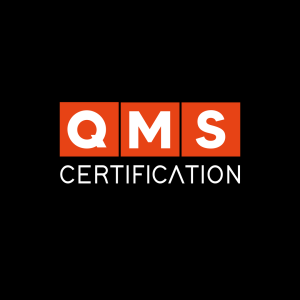Understand the true intent of the ISO 9001 Audit and how the Quality Principles can affect your results!
ISO 9001 is the most popular standard in the management world. For this reason, the search for auditors of this standard has increased more and more.
However, organizations are always happy with the results of audits. Generally, they are “too plastered” or “normative” and, therefore, do not provide real feedback, that is, they really help companies to improve and adjust their management systems.
This happens, among other reasons, because many auditors did not really understand how to audit ISO 9001. In most of these cases, auditors focus on the “standard checklist”. However, good auditors are those who are able to audit the standard from the perspective of the Quality Principles.
When you audit the principles, you really “enter the company’s management” and find the points that are really relevant to it. Let’s see how this can happen for each item.
1 – Customer Focus
ISO has carried this principle since 1985, and this is certainly the most important of all. A good auditor does not audit the “company processes”, but rather how these processes are (if they are) organized to meet the needs and expectations of the company’s customers.
The auditor needs to understand if there are ways in place to recognize and meet what the customer is looking for in the company. What are these ways and practices? This is an unrestricted choice of the company, the auditor is only responsible for understanding whether that Management System is, in fact, focused on the client!
2 – Leadership
Another Quality Principle is Leadership. The standard brings him by believing that the leaders are responsible for promoting quality within the company. Imagine a company where its leaders do not encourage basic processes, such as dealing with non-compliances or risk management.
Thus, the auditor needs to understand whether, in the audited processes, the leaders act to ensure Quality and, therefore, compliance with all other requirements and principles.
 3 – People engagement
3 – People engagement
Engaging people is generally one of the biggest difficulties in the quality universe. Deployments suffer a lot to get people engaged. So how to audit this principle?
What we need to understand is whether the System, as a whole, has devices that help it engage people. If so, what are they? What are the actions of Leadership to get people engaged? Do people understand the importance of executing their processes with quality?
Imagine, for example, a system that has been in place for, say, 3 years. Now imagine that there was never an open non-conformity by a collaborator who “was not of the quality”. Does this system really engage people?
4 – Process approach
How does the company understand the processes that run in it?
Here, we need to understand if she really prioritizes the process approach. Is there a PDCA (or other methodology) in place? Does the company understand what are the inputs, activities and outputs of the processes?
We need to understand, and audit, if the interaction between the processes is clear and if it works. In other words, we have to see if the process works end-to-end, even if the company does not know what an end-to-end process is and does not organize its processes that way.
Our task is to understand if the company understands these aspects in order to monitor them, improve them and allocate the right resources to them.
5 – Improvement
My God here comes the infamous Continuous Improvement! How to audit it?
Here, it’s easy to fall into the trap of auditing what the company sees as an improvement: “We’ve improved process X; We buy a new machine; We train X employees”.
Not that these aspects are unimportant, they are indicative that the company is operating. But did these actions really lead to improvements? Is the company learning from the results, trying new things from critical analysis? For example, complaints have decreased, is the company making more profit? Has people’s performance improved? If yes, the company is improving, if not, it is necessary to understand why continuous improvement does not appear!

6 – Evidence-based decision making
When we talk about records and documents, many professionals still refer to them as “bureaucracies”. However, how would it be possible for a company to make decisions based on facts and data without actually having collected those facts and data?
Therefore, we need to check whether the company uses the information that the system itself generates to make the best possible decisions. Whether through documented information or not, the important thing here is to take the evidence into account.
7 – Relationship management
Here, we need to seek in the Management System the means that the company uses to manage its relationships.
Here the company has to plan how it relates to ALL stakeholders. For example, how does it encourage suppliers to deliver higher quality raw materials for it to incorporate in its products? By the way, remember that before 2015 the principle was “Supplier Management?”.
So, what devices ensure that it is relating to customers, suppliers, shareholders, employees (interested parties) in the right way? Without this management, it can be much more complicated, for example, to assess customer needs.
That’s why managing relationships is essential!
Quality Principles must be found in the ISO 9001 Audit!
These Quality principles are fundamental for us to achieve the necessary specificity in an audit. Only through them can we really understand the company and find points for improvement in the Management System.
Obviously, here we only talk a little bit about it, in a more superficial way. To audit correctly, we need to know each one of them, and their application, in a deep and interconnected way with the standard. See you next time!











